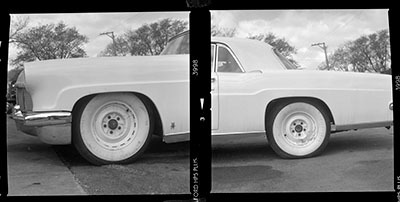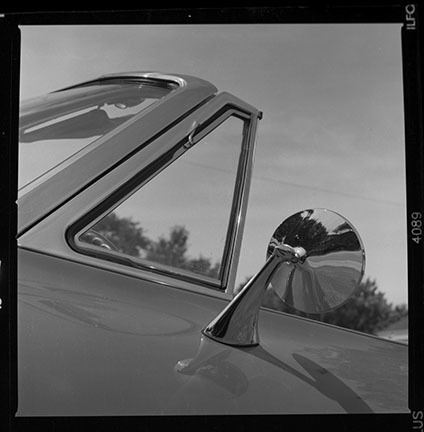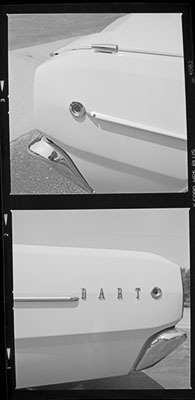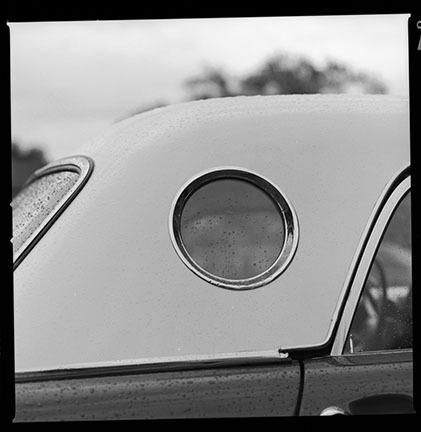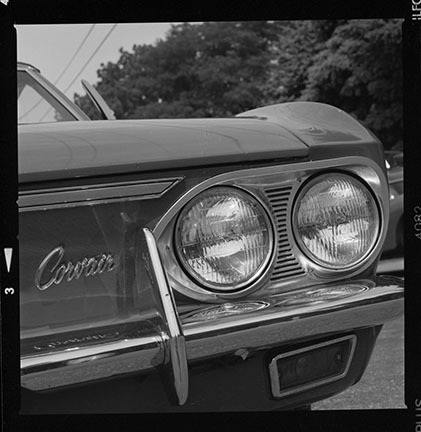Blog Author David Gremp
I spent my first 30+ years in photography taking pictures almost exclusively of people, mostly environmental portraits. Occasionally a building or oddball structure would catch my attention, but it was humans that I was drawn to with my camera.
And then one day a few years ago as I was walking from my commuter train to pick up my Jeep after an oil change at my local auto repair shop, I happened to notice a variety of older cars, mostly “classics” from the 50s and 60s, in their parking lot and up on racks in every conceivable phase of repair or restoration: engines pulled, seats and dashboards out, carburetors removed, wheels and brakes all over the place. It struck me that my auto shop was doing something special and had become a destination repair and restoration shop for these older cars.
While I have never considered myself a “gear head,” even growing up in the 50s and 60s, I always had a soft spot in my heart for those old ’55, ’56, ’57, ’58 Chevies, ’59 Cadillacs, ’65 Mustangs, etc. etc. I actually did own a ’65 Mustang—black with red-wall Tiger Paw tires—but it was a wimpy 6-cylinder, automatic. Pfffft!
Anyway, I thought it might be fun to come back with my camera and take some photographs of these cool cars, which I did the following Saturday morning, and the Saturday morning after that. It didn’t take me too long to realize that many of these cars were in for quick repairs (brakes, carburetors, gaskets, etc.) and they were gone within a week or so . . . only to be replaced by other, sometimes cooler, cars.
One thing became apparent early on: all of the cars had to be photographed exactly where they were as I found them because all were dismantled to one degree or another. The only thing I could change was the time of day I photographed, which I did. I also chose to shoot close-ups, eliminating all or most of the uncontrollable background information. After a dozen or so visits, and 5 or 6 rolls of 120 black-and-white film, I found that my natural interests and inclinations were to isolate common but unique aspects of each car: e.g. headlights, tail lights, hood ornaments, logos, door handles, rearview mirrors, chrome trim and wheels.
Eventually I started to accumulate groupings from each aspect, making “chapters” if you will. It was fun just cutting all the contact sheets up into little 2 ¼” squares and sometimes creating random pairings based upon similar abstract shapes—sort of like playing with jigsaw puzzle pieces or little Scrabble letter blocks. Every picture tells a different story or brings another thought, idea or word to mind depending upon what it’s paired or grouped with.
What I didn’t expect, or even notice until I processed the rolls of film and made contact sheets, was that some of the pairings or sequences on the film strips created interesting diptychs and triptychs that I didn’t want to separate; kind of unintentional multiple- or composite-portraits that exposed or expressed a little more about each car’s personality.
Looking back over the project, which lasted a couple of summers, I can now see some of the similarities between my portraits of people and my collection of car parts. What was so special about so many, if not all, of the cars made back in that era was that each brand, model and year had its own distinct personality that shows in the features of each of their faces (eyes/headlights, nose/hood ornament, mouth/grill) and all of the other body parts that make up the whole.
Of course, today some of us can still tell the difference between, say, a Ford and a Chevy, but I think most will agree that it’s usually only from the logo or overall body style. I would pretty much defy anyone to identify most of the cars made today from a single, isolated photograph of their headlights, tail lights, grill, trunk, bumper, rearview mirror, hubcaps, etc. Something lost? I’m not so sure. But I’m glad I found this special place, right in my own backyard and, surprisingly, right up my alley. It’s been fun, fun, fun! In fact it was a gas!